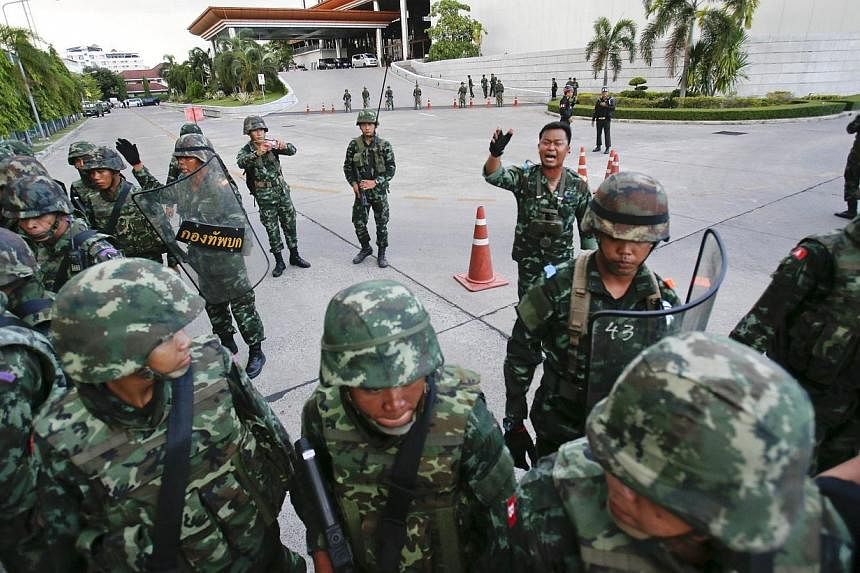The Thai military on Thursday declared a coup, saying that it was "necessary to seize power".
Thai Army chief Prayut Chan-O-Cha made the announcement on television flanked by senior military officers. The last coup in Thailand was in 2006 and had been followed by more than a year of military rule. Here's a brief history of the coups that have taken place in the country:
1932: The bloodless coup of 1932, also known as the Siamese revolution of 1932, was a turning point in Thailand's history. A small group of military officers, known as the "Four Musketeers", overthrew King Prajadhipok, ending nearly seven centuries of absolute monarchy and establishing a constitutional monarchy. Thereafter, Thailand got its first constitution, paving the way for social and political reforms.
1933: Military stepped in to remove the first prime minister of Siam after 1932, Phraya Manopakorn Nititada. Phraya Phahon, who played a key role, then became Siam's second prime minister, a position he served for five years.
1947: Thai military stepped in again to remove the government of Rear Admiral Thawan Thamrongnawasawat, which was marred by scandals and corruption. The "Coup Group", put Khuang Aphaiwong, a founder of the Democrat Party, as the prime minister. The coup solidified the role of the army in Thai politics.
1951: The Silent Coup was attempted while King Bhumibol Adulyadej was in Lausanne, Switzerland. The group then appointed Field Marshal Phibunsongkhram as the new prime minister.
1957: When the rigged parliamentary election of 1957 continued to keep Phibunsongkhram in power, mass protests occurred in Bangkok, making King Bhumibol unhappy. That led Field Marshal Sarit Thanarat to stage a coup, and Pote Sarasin was appointed the head of an interim government.
1958: Sarit, the military leader, led a coup in 1958. It heralded the arrival of a new authoritarian era in Thai politics.
1971: Saying that there was a need to suppress the Communists, Field Marshal Thanom Kittikachorn staged the coup of his own government and dissolved parliament.
1976: Less than eight months after an unsuccessful overthrow attempt, the Thai military staged a coup and overthrew Prime Minister Seni Pramoj. In a nationally broadcast address, Admiral Sangad Chaloryu declared himself in charge of the newly formed National Administrative Reform Council, which would oversee martial law in the country.
1977: Thanin Kraivichien, only in government for one year, was overthrown in a bloodless military coup led by the man who had put him in power, Admiral Sangad Chaloryu, after Thanom was accused of leading a repressive government.
1991: Prime Minister Chatichai Choonhavan was arrested on his way to meet the king, where he was reportedly planning to ask to appoint a deputy defence minister viewed as a rival to the military elite. General Sunthorn Kongsompong assumed power as leader of a National Peacekeeping Guard.
Sept 19, 2006: The armed forces dismissed the government and revoked the country's 1997 constitution. Prime Minister Thaksin Shinawatra, on a visit to New York, declares a state of emergency in Bangkok after news of the coup.
May 22, 2014: Thai Army chief Prayut Chan-O-Cha declares military coup after months of deadly political turmoil.
Source: Washington Post, The Straits Times archives

